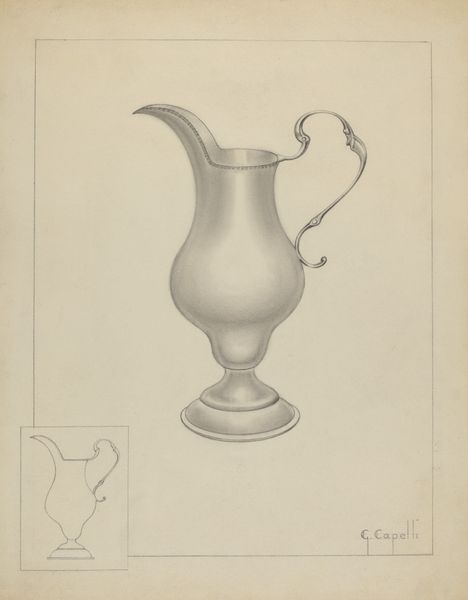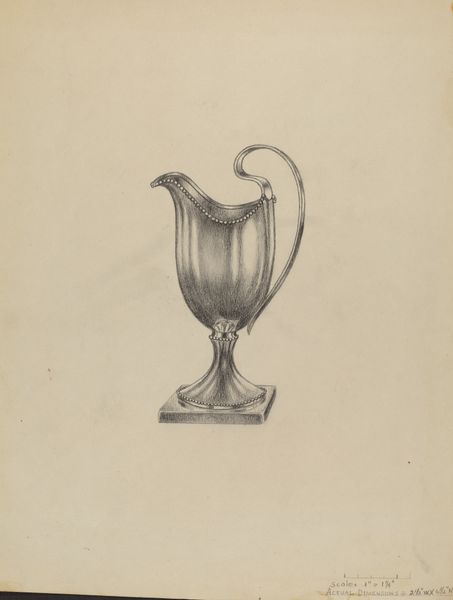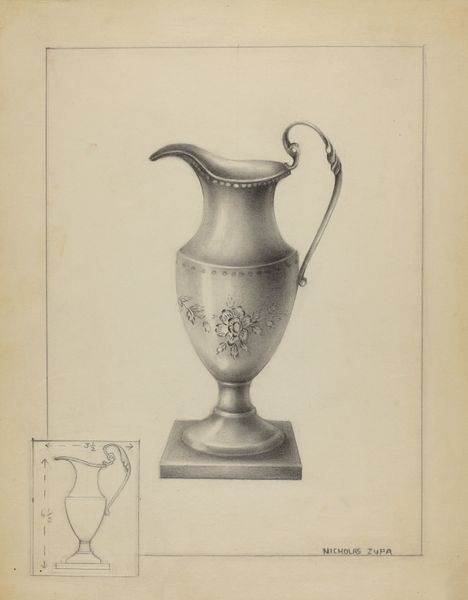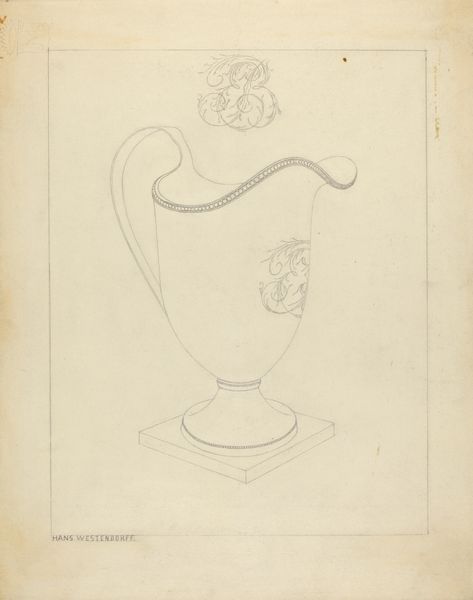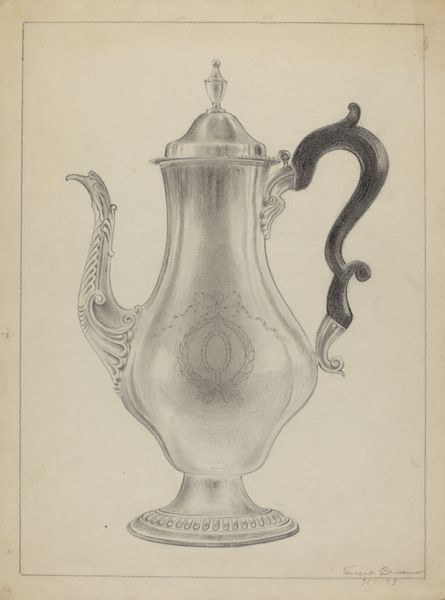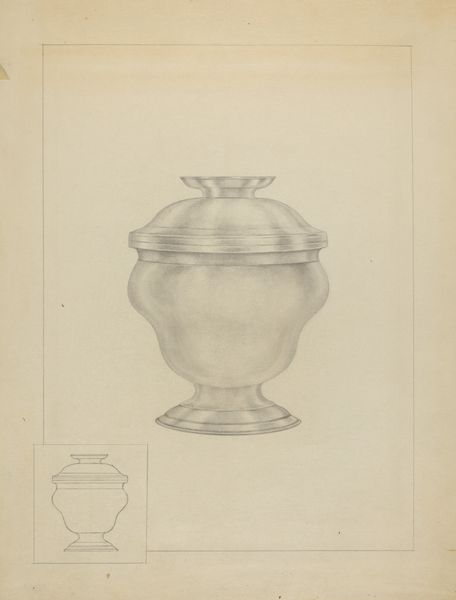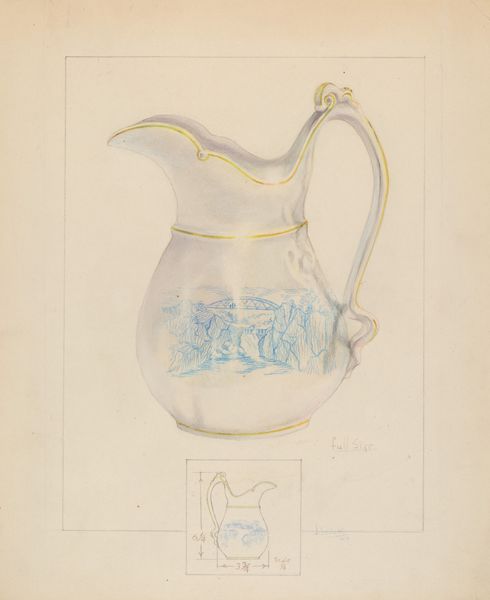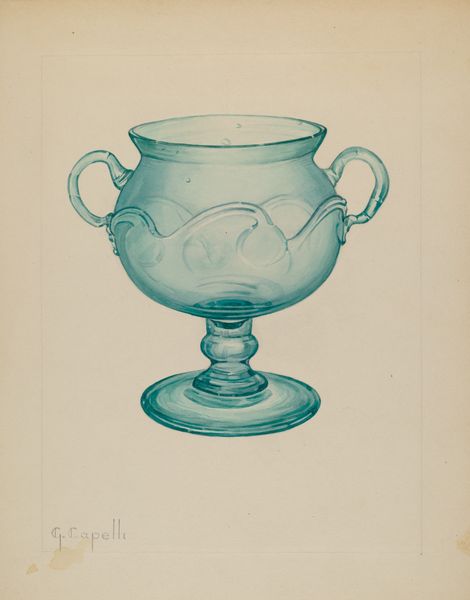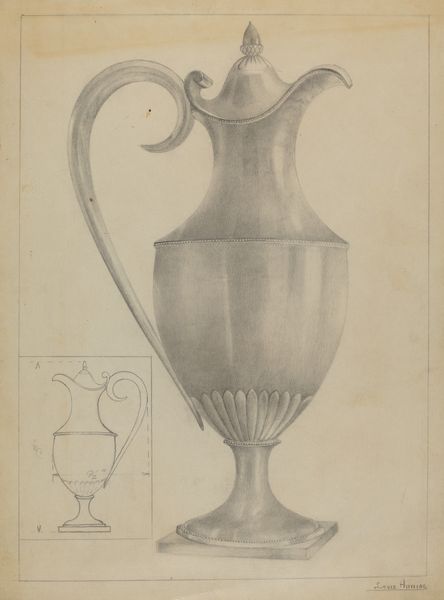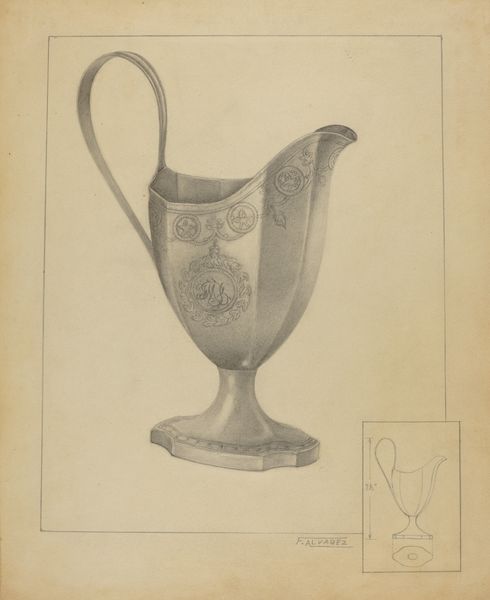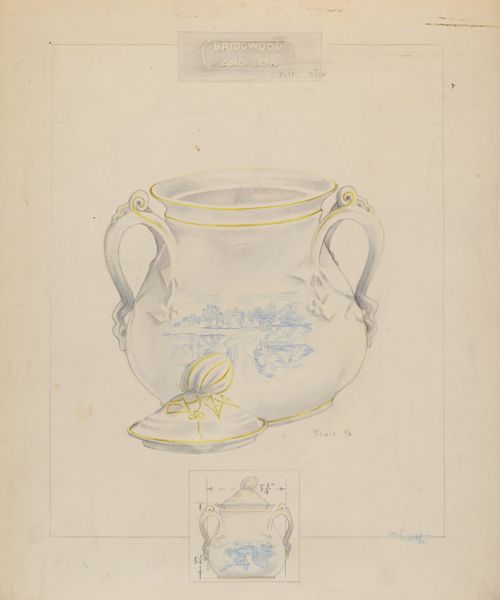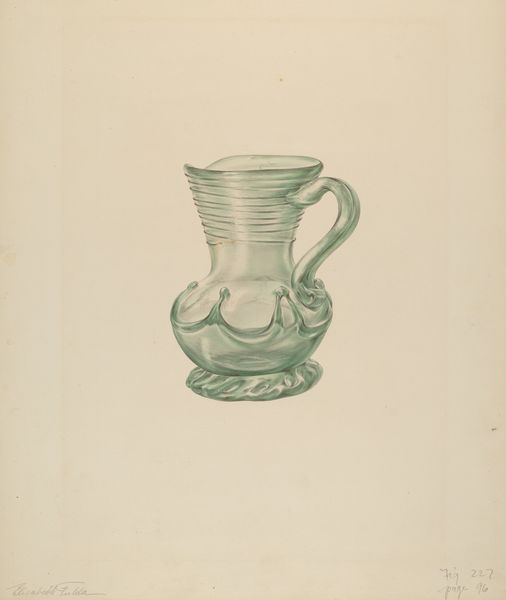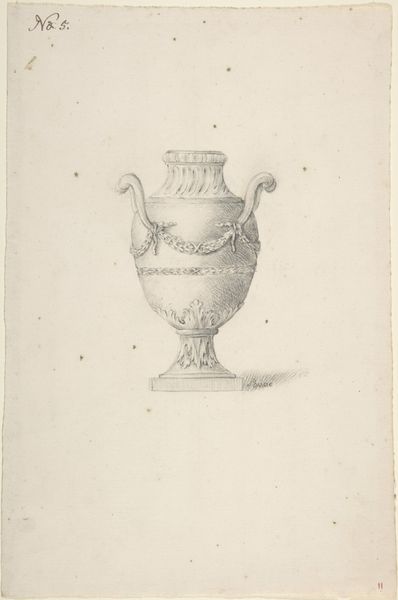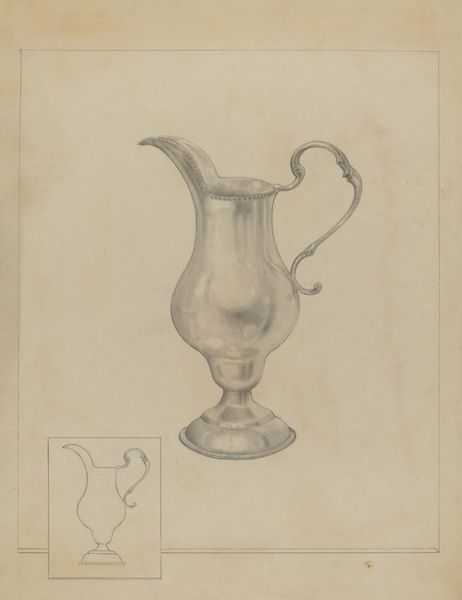
drawing, watercolor
#
drawing
#
watercolor
#
watercolor
Dimensions: overall: 35.7 x 24.5 cm (14 1/16 x 9 5/8 in.)
Copyright: National Gallery of Art: CC0 1.0
Editor: So, here we have David P. Willoughby's "Silver Pitcher," circa 1937, done in watercolor and drawing. There's a quiet formality to it. What stands out to you? Curator: It's interesting to see such a commonplace object rendered with such care. One might even say veneration. What societal trends were influencing art during this period, particularly in depicting everyday objects? Editor: Well, the '30s were a time of economic hardship, right? So, maybe celebrating simple, functional beauty offered a kind of comfort? Curator: Precisely. Consider the Social Realism movement – aiming to depict everyday life. Could Willoughby be subtly participating in that, or perhaps reacting against its grittiness? Notice the artist’s choice of subject—what could this pitcher, traditionally a symbol of hospitality, represent in a society grappling with scarcity? Editor: So it's not just a pretty pitcher, but maybe a statement about values? It makes me think about who got to experience beauty during that time and who didn’t. Curator: And how the very act of representing this object becomes a social statement. Are there specific details – the light, the reflections – that either amplify or challenge established notions of wealth or access? Editor: I see what you mean. The highlights almost seem to elevate the pitcher, while the simple medium makes it accessible, at least as an image. Curator: This tension—between the aspirational and the actual—is perhaps where its power lies, prompting a deeper reflection on what art *does* within society. This image made me realize more of the politics inherent in artmaking, I should think more about who can access it and how this all impacts art history and appreciation. Editor: This helps me appreciate how even a seemingly simple drawing can reflect broader social concerns. Thank you!
Comments
No comments
Be the first to comment and join the conversation on the ultimate creative platform.
